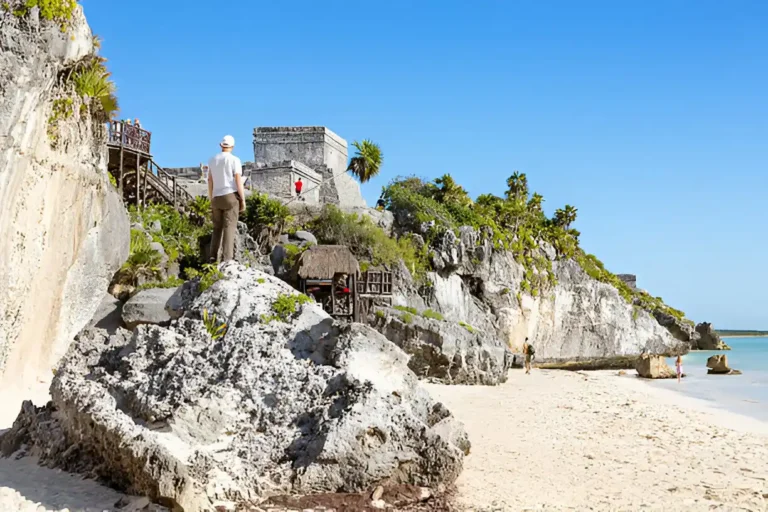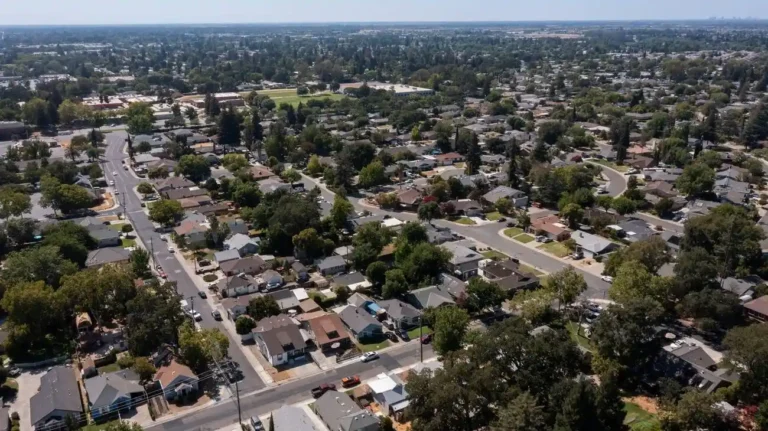Guanajuato City: A Guide to Mexico’s Most Colorful Destination
Nestled in the mountains of central Mexico, Guanajuato City is a vibrant and enchanting destination that beckons travelers with its colorful colonial architecture, winding alleyways, and unique underground tunnels. Recognized as a UNESCO World Heritage Site, this captivating city seamlessly blends its rich history with modern-day charm, offering visitors an unforgettable cultural experience.
Guanajuato’s distinctive geography is a testament to its ingenuity, with the city built into the narrow valleys and canyons of the Sierra Madre mountains. Houses and buildings cascade down the hillsides in a kaleidoscope of colors, creating a picturesque scene that has inspired artists and photographers for centuries. The city’s underground tunnels, originally built to divert rivers, now serve as pedestrian walkways, adding an extra layer of intrigue to this already enchanting destination.
As you wander through the winding streets, you’ll be transported back in time, surrounded by beautifully preserved colonial architecture, grand plazas, and ornate churches. The city’s vibrant cultural scene is evident in its numerous museums, galleries and theaters, where traditional arts and crafts are celebrated and preserved.
History and Culture
Guanajuato City boasts a rich tapestry of history and culture, woven from indigenous roots, Spanish colonial influences, and a pivotal role in Mexico’s revolutionary past. The city’s origins can be traced back to the Chichimeca and Otomi indigenous groups who inhabited the region before the Spanish arrival in the 16th century.
The Spanish colonial era left an indelible mark on Guanajuato, evident in its baroque and neoclassical architecture, narrow alleyways, and grand plazas. The discovery of rich silver deposits in the nearby mountains fueled the city’s growth and prosperity, attracting miners, artists and intellectuals from across New Spain.
Guanajuato played a crucial role in Mexico’s struggle for independence from Spanish rule. The city witnessed pivotal events such as the famous “El Grito” (The Cry) by Miguel Hidalgo y Costilla in 1810, which ignited the revolutionary movement. The Alhóndiga de Granaditas, a former granary-turned-fortress, stands as a poignant reminder of the bloody battles fought between insurgents and royalist forces.
One of Guanajuato’s most unique cultural attractions is the Museo de las Momias (Mummy Museum), which houses a collection of naturally mummified bodies dating back to the 19th century. This macabre yet fascinating exhibit offers insights into the city’s history and burial practices.
Guanajuato’s vibrant cultural scene is also reflected in its annual festivals and traditions. The city comes alive during the Cervantino International Festival, a celebration of music, dance, and theater held each October. The Callejoneadas, a tradition of roaming troubadours serenading visitors in the city’s alleyways, adds to the enchanting ambiance.
With its blend of indigenous, colonial, and revolutionary influences, Guanajuato City offers visitors a captivating journey through Mexico’s rich cultural tapestry, where history and tradition intertwine seamlessly with modern-day life.
Top Attractions of Guanajuato City
Guanajuato City is a treasure trove of captivating attractions that showcase the city’s rich history, vibrant culture, and architectural marvels. One of the most iconic landmarks is the El Pípila monument, a towering statue honoring a local hero who played a pivotal role in the Mexican War of Independence. Perched atop a hill, this imposing figure serves as a symbol of Guanajuato’s resilience and patriotism.
The Juarez Theater, a stunning example of Baroque architecture, is a must-visit for theater enthusiasts and architecture aficionados alike. This opulent venue, with its ornate façade and lavish interior, hosts a variety of cultural events and performances, allowing visitors to immerse themselves in the city’s vibrant artistic scene.
For those seeking a romantic escape, the Callejón del Beso (Alley of the Kiss) is a narrow alleyway where legend has it that lovers could share a kiss while standing on opposing balconies. This charming spot, adorned with colorful buildings and overhanging balconies, captures the essence of Guanajuato’s enchanting allure.
The Basilica of Our Lady of Guanajuato, a magnificent religious edifice, stands as a testament to the city’s deep-rooted faith and architectural prowess. Its intricate façade, adorned with intricate carvings and statues, is a sight to behold, while the interior boasts breathtaking frescoes and ornate altars, inviting visitors to marvel at the craftsmanship and devotion that went into its construction.
For a unique and somewhat eerie experience, the Mummy Museum offers a glimpse into Guanajuato’s fascinating history. This museum houses a collection of naturally mummified bodies, preserved by the region’s arid climate, providing visitors with a haunting yet intriguing look into the past.
Finally, the ex-Hacienda San Gabriel de Barrera, a former colonial hacienda, transports visitors back in time with its well-preserved architecture and stunning gardens. This historic site offers a glimpse into the grandeur and opulence of Guanajuato’s past, making it a must-visit for those seeking to immerse themselves in the city’s rich cultural heritage.
Underground Streets and Tunnels
Guanajuato City is renowned for its unique network of underground streets and tunnels, a fascinating labyrinth built into the valleys and hills. This subterranean system was originally constructed to divert rivers and prevent flooding in the city’s lower areas. As the population grew, these underground passages were transformed into functional roads and walkways, allowing residents to navigate the city without disrupting the flow of traffic above.
The underground streets and tunnels stretch for kilometers, interconnecting various neighborhoods and providing a captivating glimpse into Guanajuato’s ingenious urban planning. Visitors can explore these dimly lit corridors on foot or by car, marveling at the intricate engineering feat that allowed the city to thrive while preserving its historic charm.
One of the most famous underground passages is the Callejón del Beso (Alley of the Kiss), a narrow alleyway where the balconies from opposing buildings nearly touch. Legend has it that lovers from rival families would share a forbidden kiss across the narrow gap, adding to the romantic allure of this subterranean wonder.
Beyond their practical use, the underground streets and tunnels of Guanajuato City have become a unique attraction, offering a fascinating insight into the city’s rich history and innovative problem-solving approach to urban development.
Food and Drink Scene
Guanajuato’s cuisine is a delicious blend of traditional Mexican flavors and innovative culinary creations. The city’s regional specialties are a must-try, with enchiladas mineras (enchiladas filled with potatoes, carrots, and a savory tomato sauce) being a local favorite. Rabbit dishes, such as Conejo en chile de árbol (rabbit in árbol chile sauce), are also popular, reflecting the area’s history of rabbit hunting.
Cheese lovers will delight in the variety of regional cheeses available, including the creamy and flavorful queso ranchero. For those with a sweet tooth, Guanajuato’s sweets are a treat, with offerings like charamuscas (fried dough covered in sugar) and cajeta (a thick, caramelized goat’s milk syrup).
In recent years, Guanajuato has embraced the craft beer scene, with several local breweries producing unique and flavorful brews. La Vie en Rose, a charming restaurant in the heart of the city, is a must-visit for its creative fusion cuisine and extensive selection of craft beers from around the world.
Whether you’re seeking traditional Mexican flavors or innovative culinary experiences, Guanajuato’s food and drink scene is sure to delight your taste buds.
Mercado Hidalgo
Mercado Hidalgo is a vibrant, traditional Mexican market that offers an authentic slice of local life in Guanajuato City. This bustling marketplace is a feast for the senses, with vendors hawking their wares amid a kaleidoscope of colors, aromas, and sounds.
As you wander through the narrow aisles, you’ll find stalls brimming with fresh produce, fragrant spices, and locally made handicrafts. Skilled artisans showcase their intricate handiwork, from colorful woven baskets and embroidered textiles to whimsical pottery and painted masks. It’s a shopper’s paradise, where you can haggle for unique souvenirs and immerse yourself in the lively banter between vendors and customers.
But Mercado Hidalgo isn’t just about shopping; it’s also a culinary destination. Street food vendors offer a tantalizing array of traditional Mexican fare, from succulent tacos al pastor and tamales to sweet treats like churros and marquesitas. Be sure to sample the locally-made ice cream, with flavors like tuna (prickly pear) and leche quemada (burnt milk) that are sure to delight your taste buds.
For a bird’s-eye view of the market’s hustle and bustle, climb the stairs to one of the rooftop restaurants. Here, you can savor regional specialties while taking in panoramic vistas of Guanajuato’s iconic colorful buildings and the surrounding Sierra Madre mountains. It’s a perfect spot to soak up the vibrant atmosphere and watch the lively market scene unfold below.
Callejón del Beso
In the heart of Guanajuato’s historic center lies the Callejón del Beso, or “Alley of the Kiss,” a narrow and romantic alleyway that has become an iconic symbol of the city. This charming passageway, barely wide enough for two people to pass, is famous for the legend that surrounds its origins.
The story goes that in the late 18th century, a young couple from neighboring households fell deeply in love. However, their families disapproved of their relationship, forcing the couple to exchange kisses and whispers of affection through the tiny window openings that connected their homes across the alley. Over time, as their love grew stronger, the opposing balconies inched closer, eventually narrowing the alley to its current width of just 68 centimeters (27 inches) at its narrowest point.
Today, the Callejón del Beso is a must-visit attraction for romantics and photographers alike. Visitors can recreate the legendary kiss by standing on the opposing balconies and leaning in for a smooch, creating a unique and memorable photo opportunity. The alley’s vibrant colors, with its yellow and terracotta walls adorned with potted plants and wrought-iron balconies, provide a picturesque backdrop that captures the essence of Guanajuato’s colonial charm.
For the best photos, it’s recommended to visit early in the morning or late afternoon when the light is soft and golden, casting warm hues on the alley’s walls. Photographers can also experiment with different angles and perspectives, capturing the intricate details of the balconies and the narrow passage that has witnessed countless love stories throughout the centuries.
Best Hotels and Neighborhoods
Guanajuato’s vibrant centro histórico (historic center) is undoubtedly the best area to stay for easy access to the city’s top attractions. The Zona Centro is a maze of colorful buildings, plazas, churches, and lively callejones (alleys). Many of the best hotels are tucked into these charming streets.
For a budget-friendly option, consider Hotel Posada Santa Fe, a colonial-style property with simple but clean rooms and a lovely courtyard. Mid-range travelers will appreciate the modern amenities and rooftop terrace at Hotel Camino de Guanajuato.
Those seeking luxury should book at Edelmira Hotel Boutique, a stunning 16th-century mansion turned boutique hotel with just 7 decadent suites. Casa de la Paz Hostel is a top hostel pick with dorms and private rooms in a 17th-century building.
Just outside the center, the Zona de la Presa offers a quieter neighborhood with easy access to the main sights. Hotel Villa Maria Cristina is a romantic 4-star option surrounded by gardens. Rental apartments in this residential area provide more space for families or longer stays.
Festivals and Events
Guanajuato City is renowned for its vibrant festivals and celebrations that showcase its rich cultural heritage. One of the most anticipated events is the Cervantino International Festival, a three-week extravaganza held in October and early November. This festival celebrates the arts, with performances ranging from music and dance to theater and literature, attracting artists and visitors worldwide.
Another highlight is the Day of the Dead celebrations, which take place on November 1st and 2nd. Guanajuato City comes alive with colorful altars, elaborate decorations, and traditional offerings to honor the departed. Visitors can witness vibrant parades, visit cemeteries adorned with marigolds, and indulge in delectable pan de muerto (bread of the dead).
In December, the city hosts the Festival Internacional del Pastorela, a celebration of the traditional nativity play known as the pastorela. This event features performances by local and international theater groups, bringing the story of the birth of Jesus to life with music, dance, and vibrant costumes.
The Mummy Museum in Guanajuato City unveils special exhibits during certain times of the year, allowing visitors to explore the city’s unique mummification process and learn about the fascinating history behind these preserved remains.
Day Trips from Guanajuato
While Guanajuato City itself is a captivating destination, its central location in the Bajío region of Mexico makes it an excellent base for exploring other nearby attractions. Here are some of the best day trips from Guanajuato:
San Miguel de Allende
Just an hour’s drive from Guanajuato, San Miguel de Allende is a UNESCO World Heritage site renowned for its well-preserved colonial architecture, vibrant arts scene, and charming atmosphere. Stroll through the picturesque streets, admire the colorful buildings, and visit the iconic Parroquia de San Miguel Arcángel church.
Dolores Hidalgo
This small town played a pivotal role in Mexico’s independence movement and is the birthplace of the country’s independence cry. Explore the historic center, visit the Museo de la Independencia Nacional, and try the locally produced ice cream, a specialty of Dolores Hidalgo.
Irapuato
Known for its strawberry production, Irapuato is a charming city with a rich history and cultural attractions. Visit the Museo del Obrero, a former textile factory turned museum, and explore the vibrant Mercado de Artesanías to find unique handicrafts.
León
León is a thriving city famous for its leather industry and impressive religious architecture. Visit the Catedral Basílica de Nuestra Señora de la Luz, a stunning example of Mexican Baroque architecture, and explore the bustling markets to find leather goods and other local products.
La Valenciana
For a unique experience, venture to La Valenciana, a former silver mining town that has been abandoned and left as a ghost town. Explore the eerie ruins and learn about the area’s rich mining history.
Hot Springs
Guanajuato is surrounded by several natural hot springs, offering a relaxing escape from the city. Some popular options include Baños de la Virgen, Baños de San José Allende, and Baños de Ojo Caliente, where you can soak in the therapeutic waters and enjoy the scenic surroundings.
No matter your interests, Guanajuato’s central location provides easy access to a diverse range of day trip destinations, allowing you to explore the rich cultural heritage and natural wonders of the Bajío region.
Getting Around
Navigating Guanajuato’s labyrinth of narrow, winding streets and steep hills can be a challenge, but it’s part of the city’s charm. Walking is the best way to explore the historic center, but be prepared for a workout as the hilly terrain can be strenuous. Comfortable shoes are a must!
Taxis are readily available and relatively inexpensive for longer distances or when your legs need a break from all the uphill climbing. However, many streets are too narrow for taxi access, so be prepared to walk the last stretch to your destination.
Uber is also an option in Guanajuato, offering a convenient and affordable way to get around, especially at night when walking may feel less safe.
To reach higher neighborhoods like Pastita and Marfil, take advantage of the city’s unique funicular rail lines and outdoor elevators. These efficient systems provide a welcome respite from the steep climbs and offer spectacular views along the way.
Despite the challenges posed by the hilly terrain, getting around on foot is the best way to fully experience the charm and character of Guanajuato’s historic center. Just take it slow, stay hydrated, and embrace the adventure of exploring this remarkably vertical city.
When to Visit
Guanajuato’s peak tourist seasons are summer (June to August) and the holiday period around Easter. During these times, crowds swell, hotel rates spike, and the city buzzes with energy. Summer brings sweltering heat, making sightseeing more challenging. For milder weather and fewer tourists, spring (March to May) and fall (September to November) are ideal times to visit.
Spring offers pleasant temperatures in the 70s°F (21-26°C) and the city’s lush gardens are in bloom. Fall brings cooler nights and crisp days, with temperatures ranging from the 60s to 80s°F (15-29°C). Both seasons provide excellent conditions for exploring Guanajuato’s hilly streets and underground tunnels without battling intense heat or massive crowds.
If you don’t mind cooler weather, winter (December to February) can also be an enjoyable time, with average highs in the 60s°F (15-21°C). Just pack warm layers for chilly evenings. Hotel rates and crowds are generally lower during this period as well.
Practical Tips for Guanajuato City
Safety:
Guanajuato is generally a safe city for tourists, but as with any travel destination, it’s essential to take precautions. Avoid walking alone at night in deserted areas, keep valuables out of sight, and be cautious of your surroundings. It’s also wise to carry a copy of your passport and leave the original in a safe place.
What to Wear:
The weather in Guanajuato is typically warm and dry, so lightweight, breathable clothing is recommended. Comfortable walking shoes are a must, as the city’s streets are often steep and cobblestone. Layering is advisable, as temperatures can drop in the evenings.
Tipping:
Tipping is customary in Mexico, and Guanajuato is no exception. For good service, it’s standard to leave a 10-15% tip in restaurants and bars. Tour guides and taxi drivers also appreciate a small tip.
Spanish Phrases:
While many locals in tourist areas understand English, learning a few Spanish phrases can go a long way. Greetings like “Buenos días” (good morning), “Gracias” (thank you), and “Por favor” (please) are always appreciated.
Money Exchange:
Avoid exchanging money at the airport or hotels, as the rates are often unfavorable. Instead, use ATMs or visit a casa de cambio (currency exchange) in the city center for better rates. Major credit cards are widely accepted, but it’s wise to have some Mexican pesos on hand for smaller purchases.
WiFi and SIM Cards:
Most hotels and restaurants in Guanajuato offer free WiFi, but the quality can vary. For reliable internet access, consider purchasing a local SIM card with a data plan from providers like Telcel or AT&T Mexico.






